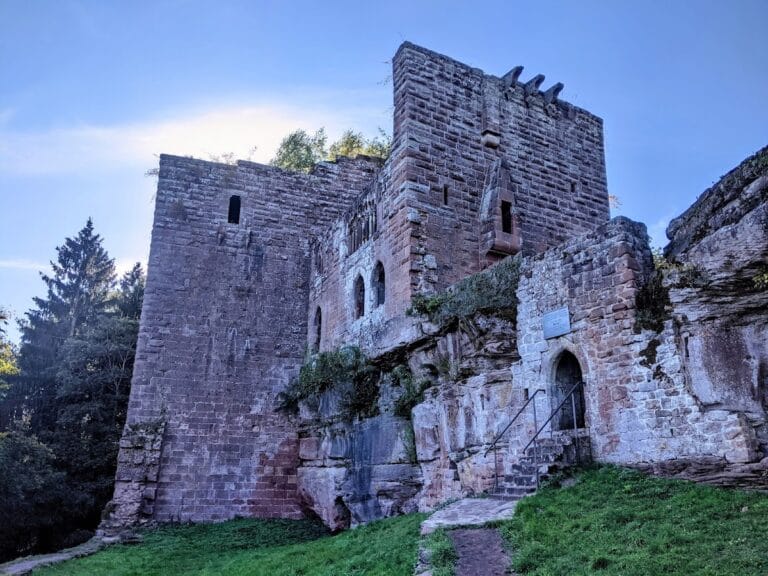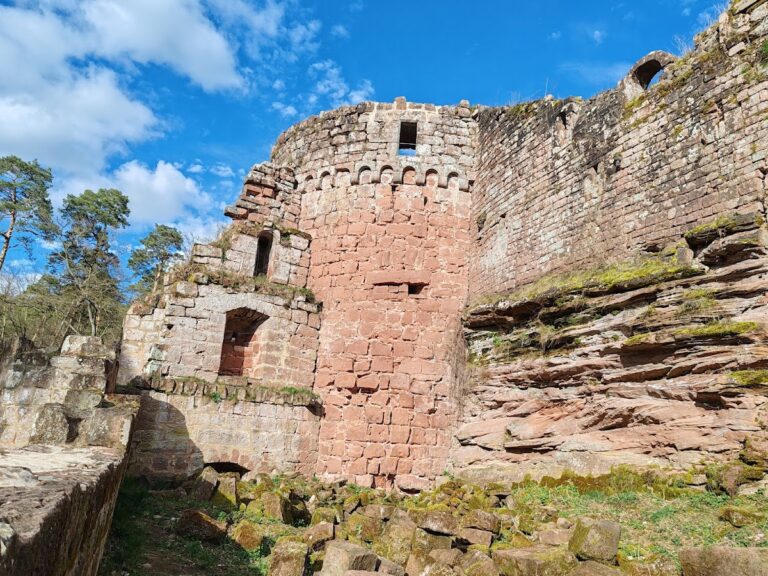Château de Waldeck: A Medieval Fortress in Éguelshardt, France
Visitor Information
Google Rating: 4.5
Popularity: Low
Google Maps: View on Google Maps
Country: France
Civilization: Medieval European
Remains: Military
History
The Château de Waldeck is a medieval fortress situated in the municipality of Éguelshardt, France. This castle was built by the Duchy of Lorraine at the end of the 13th century to protect the eastern borders of its territory.
Originally, in 1227, the castle was under the ownership of the Limanges (Leiningen) family. By the early 14th century, its possession became shared between the Kirkel family—descendants of the Sarrewerden line—and the Lichtenberg family. The fortress’s central tower, or keep, functioned as an important lookout point, overseeing key routes linking Alsace, the Sturzelbronn Abbey, and the Palatinate region.
In 1341, the Kirkel and Lichtenberg families formalized an agreement concerning their joint residence within the castle. Following the end of the Kirkel lineage in 1387, the property underwent several transfers until the Counts of Deux-Ponts-Bitche regained sole control by 1443.
The year 1570 saw the castle inherited by Philippe V of Hanau-Lichtenberg. A notable dispute arose regarding feudal dues owed to the Duke of Lorraine, culminating in a settlement by 1606 that restored the castle to the Duchy of Lorraine. Boundary markers from this settlement period are still visible at the site.
The fortress’s military importance continued until 1633, when French troops commanded by Marshal de la Force dismantled it. Over a century later, on 26 March 1761, the area witnessed combat when French infantry led by Nicolas d’Origny expelled an English battalion from the castle grounds. This engagement resulted in d’Origny’s death, marking a significant event during the site’s later history.
Remains
The Château de Waldeck occupies a sandstone spur rising above the forested surroundings, looking out over the hamlet of Waldeck to the east. Its layout originally included two prominent square towers, integral to the castle’s defensive function. The southern tower, constructed from finely cut sandstone blocks featuring bossage—a masonry technique that leaves stone faces rough for a textured effect—is preserved with its distinctive crenellations, or battlements. This tower underwent restoration in 1900 through the efforts of the Club Vosgien, a regional association dedicated to maintaining local heritage.
In contrast, the northern tower was lost to lightning damage during the 19th century, leaving only its remnants. Below the southern tower, remnants of the lower courtyard and its enclosing walls remain visible. Historically, this courtyard was accessed by a movable ladder, indicating defensive concerns and controlled entry to the inner areas.
At the northern edge of the castle’s platform, there is a carved underground chamber featuring a central pillar, hewn directly into the sandstone rock. This chamber likely served a functional role such as storage or shelter within the fortress complex. Close to this area, a separate square tower built with bossage stone still stands along with a substantial cistern, which would have been essential for collecting and storing water.
The castle’s elevated position still offers extensive views over the Erbsenthal valley and the Hanau pond, underscoring its strategic placement. Recognized for its cultural and historical significance, the ruins have been officially protected as a historic monument since 1930. However, access to the site has been restricted since 1999 to preserve its condition.










